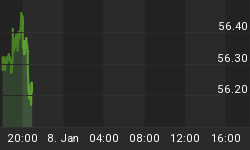Following is a summary of my post-CPI tweets. You can follow me @inflation_guy!
-
Well, I hate to say I told you so, but...increase in core CPI biggest since Aug 2011. +0.3%, y/y up to 2.0% from 1.8%.
-
Let the economist ***-covering begin.
-
Core services +2.7%, core goods still -0.2%. In other words, plenty of room for core to continue to rise as core goods mean-reverts.
-
(RT from Bloomberg Markets): Consumer Price Inflation By Category http://read.bi/U60bLJ pic.twitter.com/R2ufMjVRRM
-
Major groups accel: Food/Bev, Housing, Apparel, Transp, Med Care, Other (87.1%) Decel: Recreation (5.8%) Unch: Educ/Comm (7.1%)
-
w/i housing, OER only ticked up slightly, same with primary rents. But lodging away from home soared.
-
y/y core was 1.956% to 3 decimals, so it only just barely rounded higher. m/m was 0.258%, also just rounding up.
-
OER at 2.64% y/y is lagging behind my model again. Should be at 3% by year-end.
-
Fully 70% of lower-level categories in the CPI accelerated last month. That's actually UP from April's very broad acceleration.
-
That acceleration breadth is one of the things that told you this month we wouldn't retrace. This looks more like an inflation process.
-
63% of categories are seeing price increases more than 2%. Half are rising faster than 2.5%.
-
Back of the envelope says Median CPI ought to accelerate again from 2.2%. But the Cleveland Fed doesn't do it the same way I do.
-
All 5 major subcomponents of Medical Care accelerated. Drugs 2.7% from 1.7%, equip -0.6% from -1.4%, prof svs 1.9% from 1.5%>>>
-
>>>Hospital & related svcs 5.8% from 5.5%, and Health insurance to -0.1% from -0.2%. Of course this is expected base effects.
-
Always funny that Educ & Communication are together as they have nothing in common. Educ 3.4% from 3.3%; Comm -0.24% from -0.18%.
This was potentially a watershed CPI report. There are several things that will tend to reduce the sense of alarm in official (and unofficial) circles, however. The overall level of core CPI, only just reaching 2%, will mean that this report generates less alarm than if the same report had happened with core at 2.5% or 3%. But that's a mistake, since core CPI is only as low as 2% because of one-off effects - the same one-off effects I have been talking about for a year, and which virtually guaranteed that core CPI would rise this year toward Median CPI. Median CPI is at 2.2% (for April; it will likely be at least 2.3% y/y from this month but the report isn't out until mid-day-ish). I continue to think that core and median CPI are making a run at 3% this calendar year.
The fact that OER and Primary Rents didn't accelerate, combined with the fact that the housing market appears to be softening, will also reduce policymaker palpitations. But this too is wrong - although housing activity is softening, housing prices are only softening at the margin so far. Central bankers will make the error, as they so often do, of thinking about the microeconomic fact that diminishing demand should lower market-clearing prices. That is only true, sadly, if the value of the pricing unit is not changing. Relative prices in housing can ebb, but as long as there is too much money, housing prices will continue to rise. Remember, the spike in housing prices began with a huge overhang of supply...something else that the simple microeconomic model says shouldn't happen!
Policymakers will be pleased that inflation expectations remain "contained," meaning that breakevens and inflation swaps are not rising rapidly (although they are up somewhat today, as one would expect). Even this, though, is somewhat of an illusion. Inflation swaps and breakevens measure headline inflation expectations, but under the surface expectations for core inflation are rising. The chart below shows a time-series of 1-year (black) and 5-year (green) expectations for core inflation, extracted from inflation markets. Year-ahead core CPI expectations have risen from 1.7% to 2.2% in just the last two and a half months, while 5-year core inflation expectations are back to 2.4% (and will be above it today). This is not panic territory, and in any event I don't believe inflation expectations really anchor inflation, but it is moving in the "wrong" direction.

But the biggest red flag in all of this is not the size of the increase, and not even the fact that the monthly acceleration has increased for three months in a row while economists keep looking for mean-reversion (which we are getting, but they just have the wrong mean). The biggest red flag is the diffusion of inflation accelerations across big swaths of products and services. Always before there have been a few categories leading the way. When those categories were very large, like Housing, it helped to forecast inflation - well, it helped some of us - but it wasn't as alarming. Inflation is a process by which the general price level increases, though, and that means that in an inflationary episode we should see most prices rising, and we should see those increases accelerating across many categories. That is exactly what we are seeing now.
In my mind, this is the worst inflation report in years, largely because there aren't just one or two things to pin it on. Many prices are going up.
You can follow me @inflation_guy!
Enduring Investments is a registered investment adviser that specializes in solving inflation-related problems. Fill out the contact form at http://www.EnduringInvestments.com/contact and we will send you our latest Quarterly Inflation Outlook. And if you make sure to put your physical mailing address in the "comment" section of the contact form, we will also send you a copy of Michael Ashton's book "Maestro, My Ass!"
















